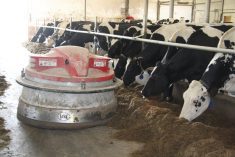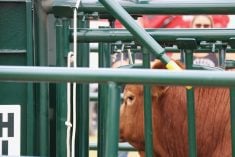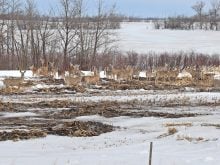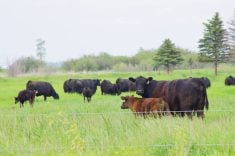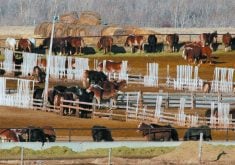In the horse world, the term ”weekend warrior” is often used to describe riders who, for reasons of work, family or circumstance, can devote time to their horses only on weekends.
What is often overlooked, however, is that the horse, too, becomes a kind of weekend warrior. After spending much of the week in quiet routines, the horse is suddenly asked to transition into long rides, jumping lessons or demanding events on Saturday or Sunday.
This abrupt rhythm, though common, carries profound consequences for the horse’s body, mind and long-term well-being.
Read Also

Manitoba extends Crown land rent freeze
Manitoba government links the continued rental rate freeze on grazing and forage leases to economic and environmental challenges facing the industry
Horses are creatures of consistency. Their bodies and nervous systems are designed for steady, rhythmic movement, low-intensity grazing and regular social interaction.
When their lives are limited to stalls, small paddocks or low-activity pastures during the week, their bodies adapt to that reality. Soft tissues lose elasticity, cardiovascular fitness declines, joints may stiffen and the metabolic system becomes accustomed to low demand.
Then, with the arrival of the weekend, the same horse is suddenly asked to perform as if it had been conditioned for endurance, speed or precision all along.
The contrast is striking. It is not unlike asking a sedentary office worker to run a half-marathon once a week without any training in between. Muscles fatigue quickly, tendons and ligaments strain and joints take on impacts they are not prepared to absorb.
Recovery stretches out, and with each cycle the risk of chronic injury grows. This pattern, repeated over time, quietly lays the groundwork for unsoundness and behavioural stress that owners may misinterpret as attitude rather than adaptation.
The physical risks of the weekend warrior lifestyle are many.
Cold, unconditioned muscles are more prone to microtears, while tendons and ligaments, which strengthen only gradually, are vulnerable to overload from sudden exertion.
Intense bursts of work such as jumping, galloping or long trotting on hard ground can inflame hoof laminae, inciting laminitis, and inflame joint cartilage, accelerating the development of arthritis.
Horses fed a steady diet throughout the week but exercised heavily only on weekends may swing between energy surplus and deficit, stressing the metabolic system and contributing to long-term imbalances.
Poor-fitting tack that might be tolerated for a short weekday ride can become a real problem during longer weekend sessions. Extended hours under ill-fitting equipment magnify pressure points and friction, turning what was once manageable into genuine soreness or injury.
The horse’s mind is no less affected.
A week of limited stimulation can lead to boredom, frustration or low-grade depression. When suddenly confronted with intense engagement, many horses respond with anxiety, tension or even explosive behaviour. What appears to be disobedience or resistance is often a reflection of unmet needs and being overwhelmed by abrupt demands.
This weekend warrior phenomenon says more about human culture than horse culture.
In past generations, horses lived within a steady rhythm of daily use.
Farm horses worked each day at consistent levels, carriage horses moved regularly and saddle horses were ridden as transportation.
Today, the pendulum has swung toward sporadic bursts of activity, dictated by competition schedules and lifestyle demands. While this shift may suit human convenience, it are horses that bear the consequences of inconsistency.
Once an owner and/or rider recognizes the risks, steps can be taken to mitigate them.
The most important support a horse can receive is daily movement. Horses with access to turnout, where they can walk, graze and socialize, are far better prepared for bursts of activity than those kept in stalls or small pens.
Even 15 to 20 minutes of midweek activity — whether hand-walking, groundwork or light riding — helps keep tissues supple and the mind engaged.
Building fitness gradually is critical. Long, intense rides should follow only after a foundation of steady conditioning has been established.
Owners must also learn to listen more closely to the subtle cues horses give. A shortened stride, reluctance to bend, wringing of the tail or a “cold” back is not stubbornness but often an early warning sign of overload.
Nutrition may need to be adjusted to better match workload, and recovery time is best built into the routine after strenuous weekends.
Most importantly, riders ought to be aware that some horses may come to associate their riders with discomfort if every interaction is tied to sudden exertion and pain upon recovery. Protecting the partnership means ensuring that time together is as rewarding as it is demanding.
Horses do not choose their schedules; humans impose it upon them. Recognizing the mismatch between equine biology and human convenience is the first step toward building a healthier balance.
A horse that is kept moving, conditioned progressively and supported with patience can thrive even if the rider’s time is limited.
However, a horse asked to carry the burden of sudden, unprepared exertion risks not only its soundness but also its trust in the human who asks it.
In the end, a horse is not a weekend vehicle, but a living being whose body and spirit depend on the rhythms we create for them.
Carol Shwetz is a veterinarian focusing on equine practice in Millarville, Alta.



